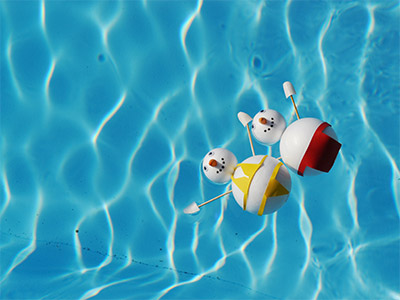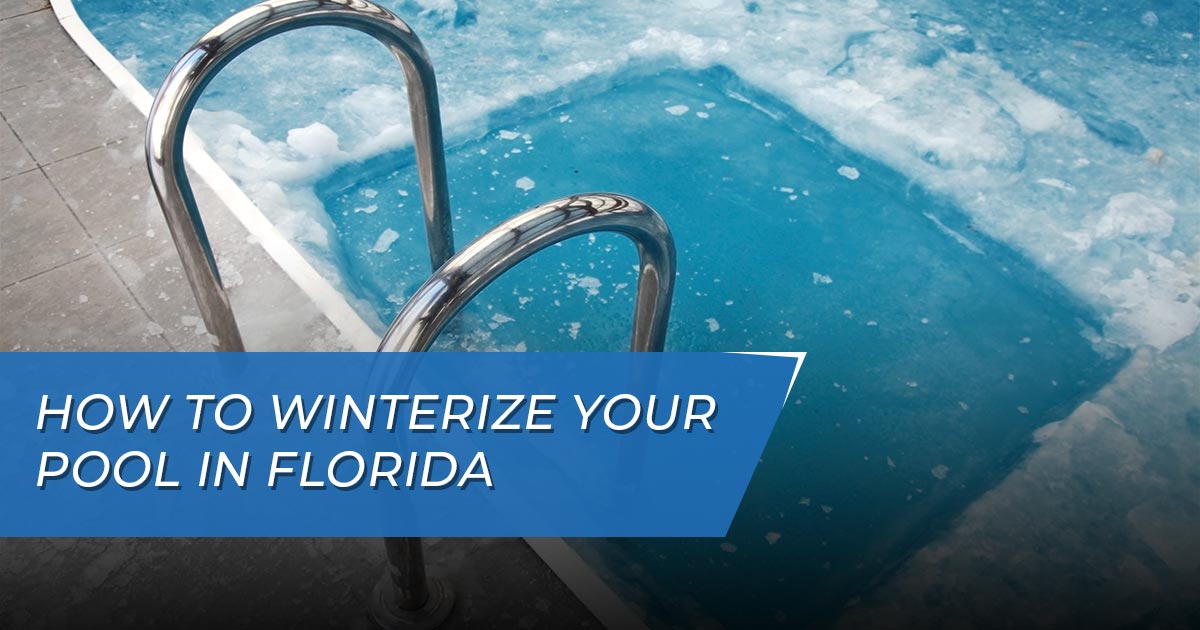How to Winterize Your Pool in Florida
The chilly season is here, and homeowners are prepping their pools for the holidays. Sure, Florida may not become frigid over the holidays—but you’ll probably skip your regular pool sessions when the wind gets a little cold.
Floridians are lucky: They don’t need to worry about winterizing the pool with extreme measures. Up north, many pool owners drain their pools to keep them safe for late-springtime operation. Down here, draining your pool can even lead to damage—as algae thrive in low water levels not protected by cold water’s antimicrobial qualities.
But what, exactly, should you do to prep your pool for wintertime?
Related Article: Winter Pool Maintenance: Why You Shouldn’t Stop Doing It
How to Winterize a Pool, the Right Way
Because you won’t be using it often—if at all—you’ll need to focus on keeping your pool’s pump operational. You’ll also need to optimize your pool’s chlorine output if you want to save some money. Where your pool heater is considered—consider getting an annual maintenance checkup.
The holidays might be right around the corner, but winterizing a pool needn’t be too time-consuming. Check out these important winter pool maintenance tips.
Adjust Your Pump’s Timer Setting
Even if you’re not using your pool, you’ll need to prevent algae build-up. One great way to prevent algae growth, mildew, and damaging dirt accumulation is to keep the water circulating. That is to say: keeping the water circulating at a rate that matches your environment’s needs.
Let’s face it: At some point, you’ll still see some chilly weather. Your pool’s water temperature will drop, even if the temperature change isn’t a big one. Colder water needs less circulation, in general. It also needs less chemical sanitation—as it’ll have fewer algae growth.
So, to optimize your pump for peak effectiveness—and without overdoing it—take this rule of thumb into account: Run your pool’s pump for one hour per 10 degrees of water temperature. So, if it’s 60 degrees outside—set your pump timer for a six-hour cycle.
Change the Chlorine Production Settings
Similar to your pool’s water circulation, its chlorine sanitation needn’t run on full blast when the chilly months roll around. Don’t be afraid to reduce your pool’s chlorine levels, slightly, to accommodate for colder water temperatures keeping algae and bacteria at bay.
Remember: Far fewer people will be jumping into your pool’s depths when it’s cold outside. While your chlorine system normally sanitizes against dirt, hair, and dead skin, its services won’t be needed nearly as much when there’s nobody around. It’s okay to turn down your traditional chlorine system.
But what about a salt chlorine generator? If you have one, simply turn down the amount of chlorine it produces. This will increase your system’s lifespan, sparing it from unnecessary runtime. During spring and summer, traditional and salt-based chlorine, both, are needed to combat algae and bacteria thriving in warm waters. Now that the warm waters are gone, give your system a much-deserved break.
Double-Check Your Heater

When learning how to winterize a pool, it pays off to give your hardware an honest examination. Now is a good time to make sure your pool heating is up to par. If you already have one, and if you’re planning on using it for wintertime pool sessions, you should still follow this guide’s tips—as you won’t be running your heater 24/7. If you don’t have a heater, maybe this is a good time to make the purchase. Pool heaters can be installed relatively quickly—and there’s still plenty of time left before the cold winds start blowing.
In any event, your pre-existing or new pool heater will need some tech examinations before winter is in full swing. It’s a good idea to contact a professional at GPS Pools if you’d like a comprehensive heater checkup. If you’d like to make a heater your pool’s newest addition, you can choose from four great energy generation types: a propane heater, an electric heat pump, a gas heater, or a solar heater
Each type of heater has its own benefits, in terms of fuel efficiency and electrical costs—and GPS Pools is here to serve as your provider.
Related Article: 4 Swimming Pool Heater Options To Enjoy Swimming All Year
Consider Some Upgrades when Winterizing Your Pool
If you’d like to use your pool’s winter downtime to invest in nifty upgrades, you have a few to choose from. A swimming pool cover is a great first consideration—as it reduces needed cleaning, filtering, and chemical chores. If you select a mesh-type cover, your pool will have amazing protection from leaves, twigs, dirt, and debris—keeping your pool even cleaner during the off-season.
A solar cover, too, can be a good investment for winterizing a pool. Designed to hold a pool’s heat in, these covers insulate the water, naturally, whenever the sun is out. You’d be surprised how warm your pool can get, even after sundown—which will save you plenty of money on seasonal heating costs.
Get Yearly Maintenance
Once you’ve scoped out some viable upgrades, wrap up your pre-winter, pool-prep checklist with a professional checkup. Your provider is well-equipped with the skills, tools, and methods needed for winterizing a pool to be in tip-top condition.
A single annual system check includes filter cleanings, chemical balance examinations, electrical checkups, and more. Really, it’s the easiest, safest, and most effective way to make sure your pool is running in good order. Learning how to winterize a pool can take some getting used to, but professional assistance makes it much easier.
Winterizing the Pool Professionally
GPS Pools prides itself upon a variety of time-tested-and-true services. Each of our elite services guarantees satisfaction, and each of our approaches utilizes custom-tailored methods to fit your pool’s needs.
Consult one of our expert team members at one of our locations in New Tampa, Land O’Lakes, or Lutz to ask about our winterization tips, services, and installation options. Learning how to winterize a pool might can save you money down the road and we’re happy to lend you a hand.

